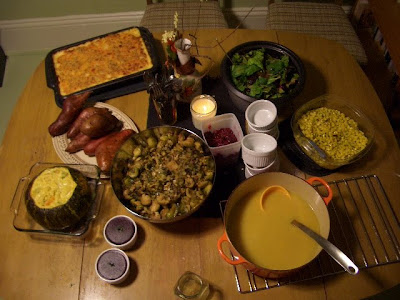Number one: French press coffee makers do indeed whip heavy cream into glorious submission:

Number two: Homemade appetizers still don't get eaten unless they are a) decor for bloody marys (celery, cheese, olive, sausage, surprisingly appropriate) or b) macarons (espresso and salted caramel, explosively delicious):

Number three: Turkeys cooked in a roasting rack do sometimes look like torpedos:

Number four: Eight Thanksgiving servings are always smaller than eight regular servings. We would all have to eat like this:

(and then some) to eat all of this:


(I still don't know where Ted's sausage-walnut-sage stuffing went. It was delicious, I promise).








